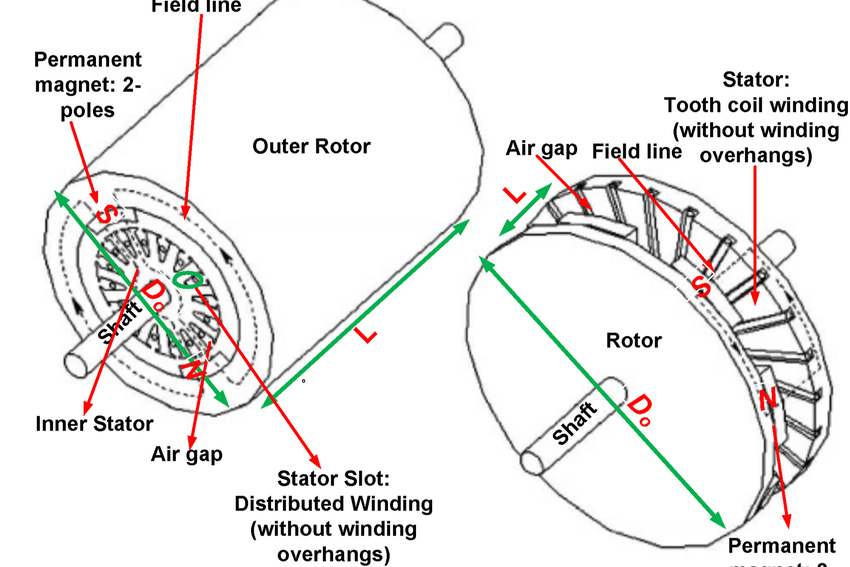The Evolution of Hard Drive Magnetic Technology
Introduction
In the digital age, vast amounts of information are created, stored, and accessed daily. The technology for housing this data has undergone remarkable evolution as well. Among the many data storage device components, hard drive magnets play a crucial role. These unassuming yet powerful magnets are the unsung heroes behind the storage and retrieval of your digital world. This article will discuss the history and development of hard drive magnetic technology. It will also highlight the important role this technology plays in modern data storage.
The Early Beginnings: Magnetic Tape Storage
The story of hard drive magnetic technology can be traced back to the early days of computing. In the mid-20th century, magnetic tape storage was the predominant method for storing digital data. Generally, reels of magnetic tape recorded and retrieved data through the use of magnetic heads. While relatively slow and bulky, it was a groundbreaking technology at the time.  [1]
[1]
Figure 1. Tape Drive
The Birth of Hard Disk Drives
--How Hard Drive Magnets Work
The advent of hard disk drives (HDDs) brought a revolution in data storage. Introduced in the 1950s, HDDs were an engineering marvel. These devices replaced the cumbersome tapes with a stack of rotating disks or platters coated with magnetic materials. Data was read from and written to these platters using magnetic read/write heads that hovered over their surfaces. This innovation not only reduced the physical footprint of data storage but also significantly improved access times and data transfer rates.

Figure 2. Hard Disk Drive
--The Role of Hard Drive Magnets
Hard drive magnets are essential components in HDDs. They are primarily used in the actuator arm, which positions the read/write heads with incredible precision over the spinning platters. The magnets in the actuator motor move the arm swiftly and accurately to the desired track on the platter. The purpose of this movement is to read or write data. The ability to precisely position the read/write heads over the correct track is critical to the efficiency and reliability of data storage. Related reading: What are the Uses of Neodymium Magnets in Computers?
--The Anatomy of Hard Drive Magnets
Inside a typical hard drive, you can find two main types of magnets:
- Neodymium (NdFeB) Magnets: These are small, powerful, and often rectangular magnets located within the hard drive's actuator arm. Neodymium magnets help control the positioning of the read/write heads and ensure that they stay aligned with the spinning disk's tracks. These magnets are essential for the precise reading and writing of data.
- Ferrite Magnets: Larger, ring-shaped ferrite magnets are positioned within the spinning disks, or platters, themselves. They help control the position of the platters and stabilize their rotation. This stability is critical for maintaining data integrity and preventing data loss due to misalignment.
The Transition to Solid-State Drives
While hard disk drives have dominated the data storage landscape for decades, the emergence of solid-state drives (SSDs) in recent years has introduced an alternative technology. SSDs use flash memory for data storage. It has no moving parts and is known for its speed and durability. Unlike HDDs, SSDs do not rely on hard drive magnets for data access, marking a significant departure in data storage technology.
 [2]
[2]
Figure 3. Solid-State Drives
The Ongoing Relevance of HDDs
Despite the rise of SSDs, HDDs remain a staple in many storage applications. They offer high-capacity storage at a lower cost per gigabyte, making them ideal for large-scale data centers, archival storage, and backup solutions. In these HDDs, hard drive magnets continue to play a pivotal role in ensuring the precision and reliability of data access.
Conclusion: The Enduring Legacy
The evolution of hard drive magnetic technology has been a fascinating journey. From the early days of magnetic tapes to the sophisticated HDDs we have today, these magnets have been instrumental in the history of data storage. While SSDs are making their mark in the industry, the enduring legacy of HDDs and the hard drive magnets they contain underscore the remarkable adaptability and resilience of this technology. As we continue to create, store, and access more data than ever before, the role of hard drive magnetic technology remains integral to the digital age. For more information, please check our homepage.
Reference: [1] Tape drive. (2023, August 25). In Wikipedia. https://en.wikipedia.org/wiki/Tape_drive [2] Solid-state drive. (2023, November 3). In Wikipedia. https://en.wikipedia.org/wiki/Solid-state_drive















